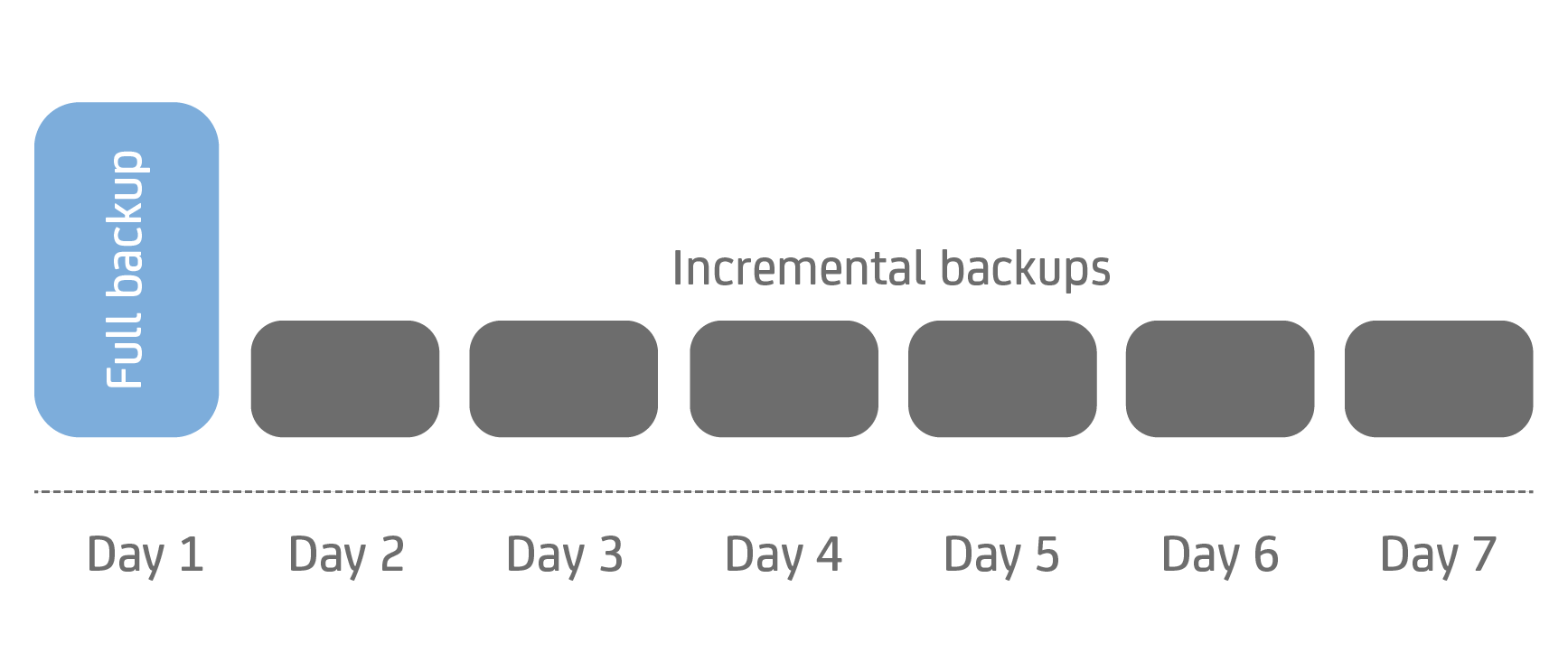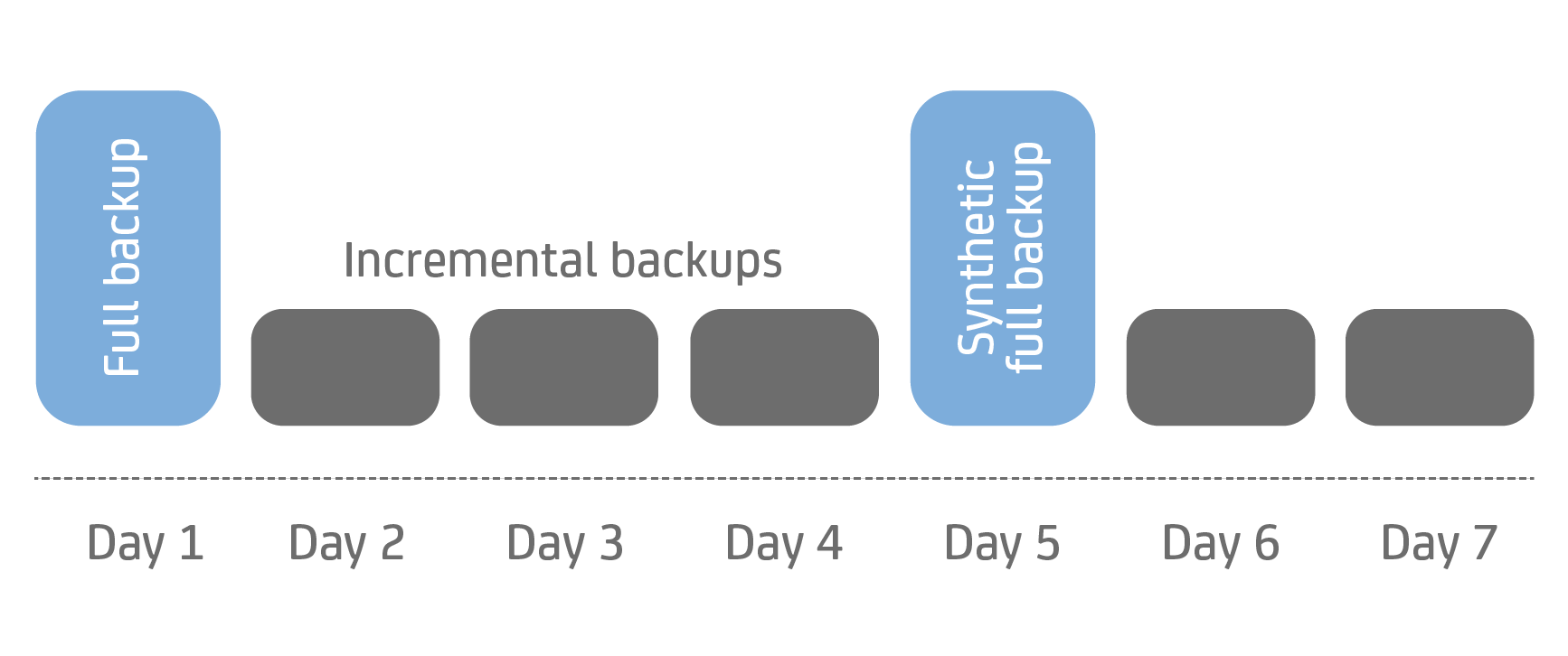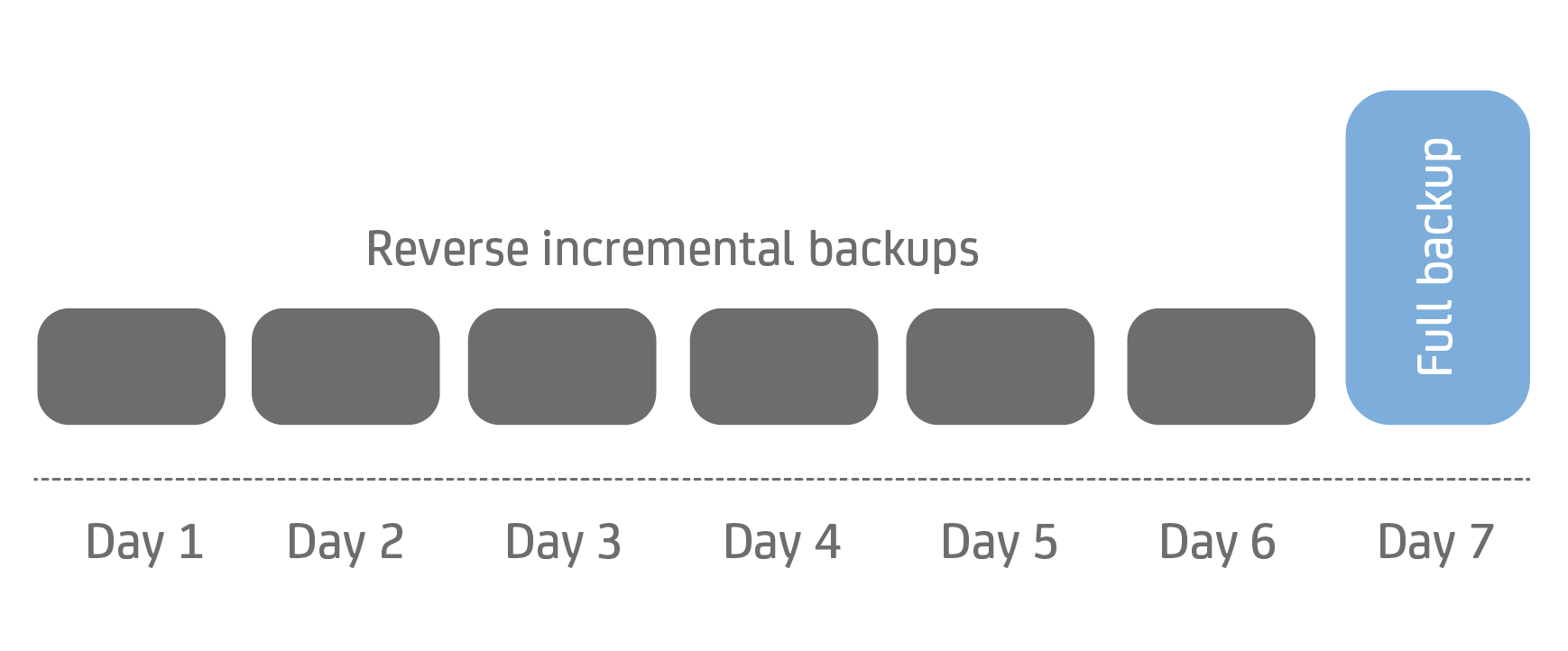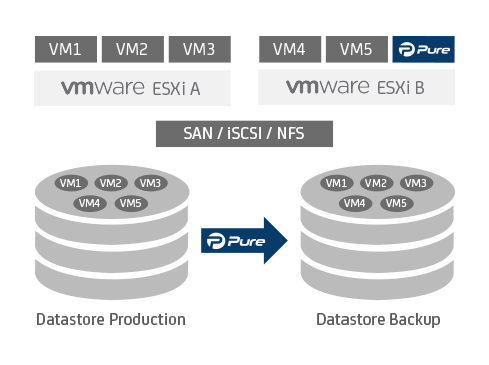By Marijan Kozic
Primer on Backup strategies
When designing the best backup strategy for a particular business environment, the goals are always the same – providing maximum data protection with minimum restore times, while reducing the impact on production resources. Approaching these goals without compromising data security distinguishes a good backup strategy from a bad one.
Virtual machines share the same hardware resources. Therefore, it is important to ensure that one machine’s backup does not negatively influence other running machines’ performances. In fact, business requirements often demand that not even the target VM should be excessively impacted. A constant availability of the services that it provides is required.
Changed Block Tracking to the rescue
Short backup windows with a small impact on hardware resources are impossible without prior knowledge of what to back up or skip. Fortunately, such a mechanism already exists – Changed Block Tracking (CBT), in VMware terminology. In CBT, the ESXi host intercepts all I/O operations of a VM, keeping a separate file where it records blocks that were changed between two points in time. The backup software uses the list of changed blocks to copy only the blocks in order to create a valid backup snapshot.
For modern, multi-terabyte machines, it is inadequate to run daily full backups. Therefore, all production-grade VMware backup solutions base their backup strategies on Changed Block Tracking. Using the changed block data, there are several backup strategies accepted as industry standards, which are shared by the majority of backup solutions.
Forever Incremental Backup
In a forever incremental backup strategy, the changed blocks are taken and saved to the external backup repository at every backup run. The first backup is a full backup, since each block of a target VM’s virtual disk is initially new. There is no previous data against which to compare the changes.
Following a successful full backup, all other backups can be incremental – only blocks that have changed since the last backup are saved. This is the fastest backup method, as it does not include any calculation. Blocks are taken “as-is” and saved to backup storage, creating a chain of incremental backup files.
The increased backup performance is compromised by longer restore times. To provide a valid restore image, the backup software first needs to take the full backup and apply all the changes saved in the incremental backups. Depending on the length of a backup chain, this can drastically impact the desired RTO requirements.
One way to mitigate this is by limiting the retention time, which keeps the backup chains relatively short. This shortens restore times, but also reduces the total number of available restore points. An adequate compromise between restore speed and backup retention time must be found.

Forever Incremental Backup strategy.
Traditional Incremental Backup
Another way to mitigate the drawbacks of the forever incremental backup is to intersperse incremental backups with the occasional full or synthetic full backup. In the traditional incremental backup, the first backup is full, followed by a chain of incremental backups. After a set number of incremental backups, a new full backup is created, which resets the chain.
By synthesizing the new full backup from the existing backup chain, no additional strain is put on the target VM. Daily backup windows can be kept almost as short as with the forever incremental backup. The desired retention time and number of historic restore points are retained.
This strategy provides a middle ground between forever incremental and reverse incremental backups. It neither offers short backup times nor causes excessively long restore times. Longer backup retention times provide greater flexibility, while reducing VM recovery times associated with the forever incremental strategy.
If actual full backups are used instead of synthetic ones, this strategy also partially mitigates the biggest problem inherent in all incremental backup strategies – the peril of a single corrupted snapshot invalidating the whole backup chain and preventing a proper restore.

Traditional Incremental Backup strategy.
Reverse Incremental Backup
The reverse incremental backup strategy is the opposite of the forever incremental backup. Instead of optimizing for shorter backup times, it trades backup speed to restore a VM as quickly as possible.
Following the initial full backup, each subsequent backup patches the full backup image and updates it to the current state. In its place, it leaves a reverse incremental file that can be used to undo the changes and return to the previous backup state.
This strategy provides the shortest possible recovery time, since the latest full backup image is prepared in advance. Another benefit is that the retention time and number of backup snapshots do not influence the recovery time. Hence, the desired backup retention policies can be chosen without restriction.
Creating a ready-to-use, full backup image also has some disadvantages. It takes time and uses resources, which negatively impacts the backup window duration. Also, this strategy only works if the VM needs to be restored to the latest snapshot. If earlier points in time need to be used (e.g. due to data corruption or malware attack), the benefit is lost. In this case, restore time is extended depending on the number of reverse incremental backups that need to be processed.

Reverse Incremental Backup strategy.
An innovative approach with Archiware Pure
One common fact for all three backup approaches is that neither one offers a perfect solution that satisfies all requirements. The customer needs to compromise between backup speed, retention time and recovery speed. Until now, customers have had to adjust their expectations to the inherent limitations of the current technology. However, with its brand new approach, Archiware’s new product, Pure eliminates all the disadvantages of the aforementioned strategies.
Archiware Pure provides an innovative, new backup strategy for virtual machines running in the VMware environment. It combines all the benefits of forever incremental and reverse incremental backups, without any of their respective disadvantages.
Archiware Pure performs backups in a similar way to the forward incremental backup strategy. The first backup takes longer, since the whole virtual disk image is transferred to a backup repository. All subsequent backups are incremental, saving only those disk areas that have changed since the last backup (using VMware’s built-in Changed Block Tracking). This ensures that only the minimum amount of data is transferred each day and allows for the shortest possible backup windows.
Archiware Pure is significantly different in the way it stores data on the backup repository. Pure creates a full disk image out of each incremental backup without any additional computing. . All these full images coexist at the same time and are ready for instantaneous restore. With all data fully deduplicated, each full backup image uses actual storage as if it were only an incremental image.
Should the need to restore arise, each full backup is instantly available without the need for any additional computation. This provides the best possible performance and opens up the possibility to introduce new innovative features for Archiware Pure. And the best thing is that customers can finally reach their RPO and RTO objectives without having to compromise on anything.

Archiware Pure is deployed as a virtual machine on the VMware ESXi.
Instant VM recovery
An upcoming feature of Archiware Pure is Instant Recovery. This allows for a backed up VM to be started directly from Pure’s backup storage as an instant replacement of the original machine. At the same time, the data is restored in the background. The novelty of this feature is in the freedom offered by Pure’s backup strategy. Multiple full backup images can be used simultaneously. Different VM versions can be compared against one-another and single files can be restored from a backup image while the VM is running from another one.
How does the technology behind Pure work? Stay tuned for future blog posts with an in-depth explanation.
See for yourself what future of VMware backups looks like – visit http://pure.archiware.com/download to download your free, 90-day trial of Archiware Pure.
